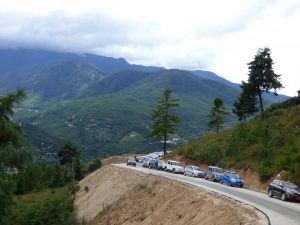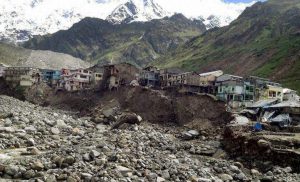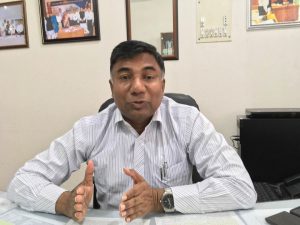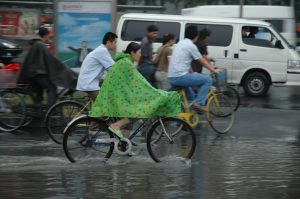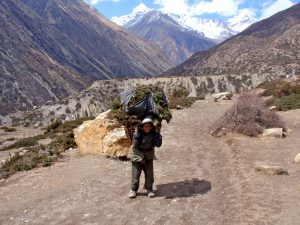You need water and energy to grow food. You need water to generate energy, even in a solar farm. You need energy to pump water. The water-energy-food nexus is a no-brainer, so why is it so often ignored? The answer depends on who’s answering.
Traditional policymakers say that the nexus is not ignored – just look at multipurpose dams, they say. The dams store water and divert it for irrigation, they release water to mitigate droughts, they regulate water flow to mitigate floods, and they generate electricity. What could be a better example of taking the nexus into account, these policymakers ask.
But academics and practitioners know that the reality is different. They know that more than half of irrigation in South Asia is provided by pumping groundwater. They know that siltation and water shortages in reservoirs regularly cause the closures of hydroelectric projects, albeit temporarily. They know the energy and water requirements of agriculture were amplified by the Green Revolution. They know that controlling flooding with embankments is outdated because the cost-benefit ratio turns out negative whenever there is a big flood.
Civil society organisations (CSOs) join academics and practitioners in bemoaning this silo approach to development planning, including its neglect of gender equity and social inclusion. Far too many organisations stay within narrow limits without examining all the implications of their work and without sufficient consultation with other sectors, within and between different countries.
Integrating the nexus approach to planning is easier said than done. But in an era where climate change is making droughts, floods and storms more frequent and more severe, where glaciers are melting faster and sea levels are rising, it must be done to prevent more serious disruptions to water, food and energy supplies.
But how? This is what a group of academics, policymakers, development practitioners and CSOs will discuss in Kathmandu over the next two days. The forum, hosted by the Australian Department of Foreign Affairs and Trade through their South Asia Regional Aid Programme, will focus on the three major transboundary river basins in South Asia: the Indus, the Ganga and the Brahmaputra.
Are there any immediate triggers that will make policymakers in South Asian countries think more about the water-energy-food nexus? Sagar Prasai, head of The Asia Foundation in India, thinks there are two.
The first and most immediate is the twin phenomena of floods and droughts. While southern India faces a drought, floods in Bangladesh, India and Nepal have been serious enough to receive global attention this monsoon season. Policymakers may well be forced to take the water-energy-food nexus into account in practice given this reality, Prasai told thethirdpole.net. This gives academics and development practitioners an opportunity to explain the nexus to policymakers, and suggest ways that nexus thinking should form the basis of planning.
The second trigger, according to Prasai, is hydropower in the Himalayas. The subject has been discussed over the years, without making any significant dent in the hydropower plans of the governments that share the three basins. But recently, the very basis of these projects has changed due to a combination of factors: uncertainty of water flow due to climate change, limited agreements between governments on projects with transboundary implications, more opposition from residents likely to be affected by the projects, and most importantly, the stalling demand for energy in India.
Coupled with increasing local opposition, developers are already abandoning hydropower projects midway. The inability of the energy demand curve to rise as projected also means that the few existing hydropower projects are only running their turbines for the 3-4 hours a day when they can sell electricity at profit.
Not only is this a game changer that is forcing planners to rethink energy plans, but it is the right moment to integrate the nexus into the planning process. The questions now: Is this changing dynamic due to a levelling off of demand, or falling energy prices, also mixed up with slowed economic growth? Is this just a short-term aberration?
Imtiaz Ahmed, professor of international relations at Dhaka University, and Purnamita Dasgupta from the Institute of Economic Growth at the University of Delhi, both feel that getting the nexus concept integrated into policy planning is going to be a long haul. Both are among the panellists at the Regional Knowledge Forum.
Asked what they saw as the trigger that could bring the nexus to the forefront between now and 2030, both referred to climate change impacts but neither were optimistic. The first step should be for academics in various South Asian countries to come together, said Dasgupta.
Ahmed has introduced a course in water diplomacy for his students and feels this could be a starting point for a wider curriculum that would eventually integrate the water-energy-food nexus into the planning process.
Describing himself as a practical man rather than a theoretician, Mohan Seneviratne of the International Finance Corporation has spent a great deal of time trying to get policymakers in South Asia to integrate the nexus into planning. To do this, he has added a C to make it the water-energy-carbon-food nexus. In an era when the carbon cycle is being studied as avidly as the water cycle, this may well be a way to make policymakers understand the importance of the nexus.
Along with population growth, climate change and other environmental pressures are fraying the connections in the nexus, Seneviratne points out. Energy use intensity for water supply is increasing, as well as water pollution and water use intensity for energy generation. In the same way, water use intensity for agriculture is increasing. So is energy use intensity for food production.
Then there are concerns about the connection between food and land, ranging from the use of land for biofuels to the burning of agricultural residue, with all their consequences. There is no getting away from the nexus, or the fact that the carbon cycle is involved.
Simi Kamal of the Hisaar Foundation agrees with Seneviratne that the issue of surging population must be added to the WEF nexus to make sense in South Asia. The aspirations of the growing South Asian middle-class place higher demands on energy and food, which have serious implications for water availability and the environment. She suggests managing the demand for energy and food and balancing the equation between water-for-food and water-for-energy.
There is little knowledge about people’s behaviour patterns when it comes to water, energy and food consumption, and about the sociology and psychology of water use, Kamal points out. That is a whole new academic discipline, but the problem is that the push for higher consumptions of energy and food, and the wasteful use of water, is not a concern to most people. There is room for more rigorous research, advocacy and lobbying in this regard.
The forum where these issues will be discussed was conceived as an opportunity for those working across the three sectors and major river basins to build shared knowledge, identify key knowledge gaps, and explore more effective approaches to addressing the interdependencies of the water, energy and food sectors for the benefit of all in South Asia.
The forum is intended to contribute to a strengthened network of actors from across the region who share new connections and more robust knowledge around key nexus issues; and more individuals and country-based coalitions of participants with practical and actionable plans for mainstreaming the nexus in research, policy and practice at national and regional scales.
![<p>While abundant water is Nepal’s blessing, haphazard hydropower planning is likely its major curse [image by: Asian Development Bank]</p>](https://dialogue.earth/content/uploads/2017/09/Kali-Gandaki-A-ADB.jpg)

